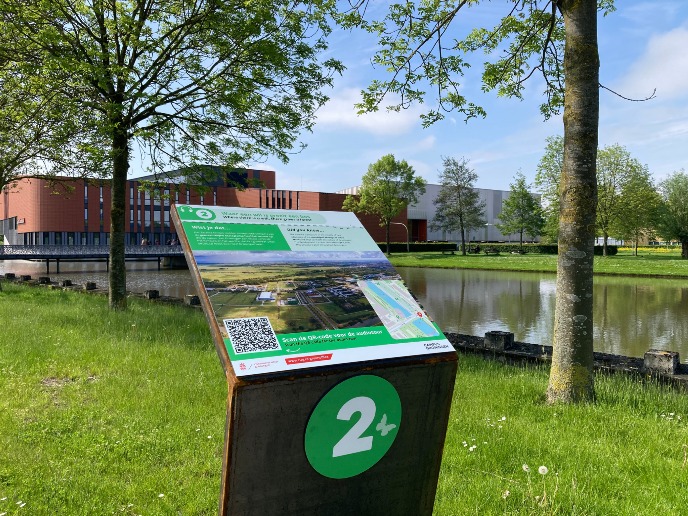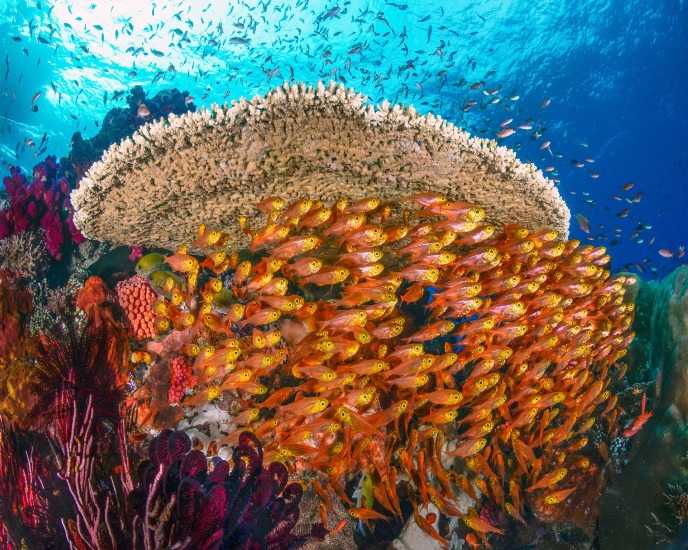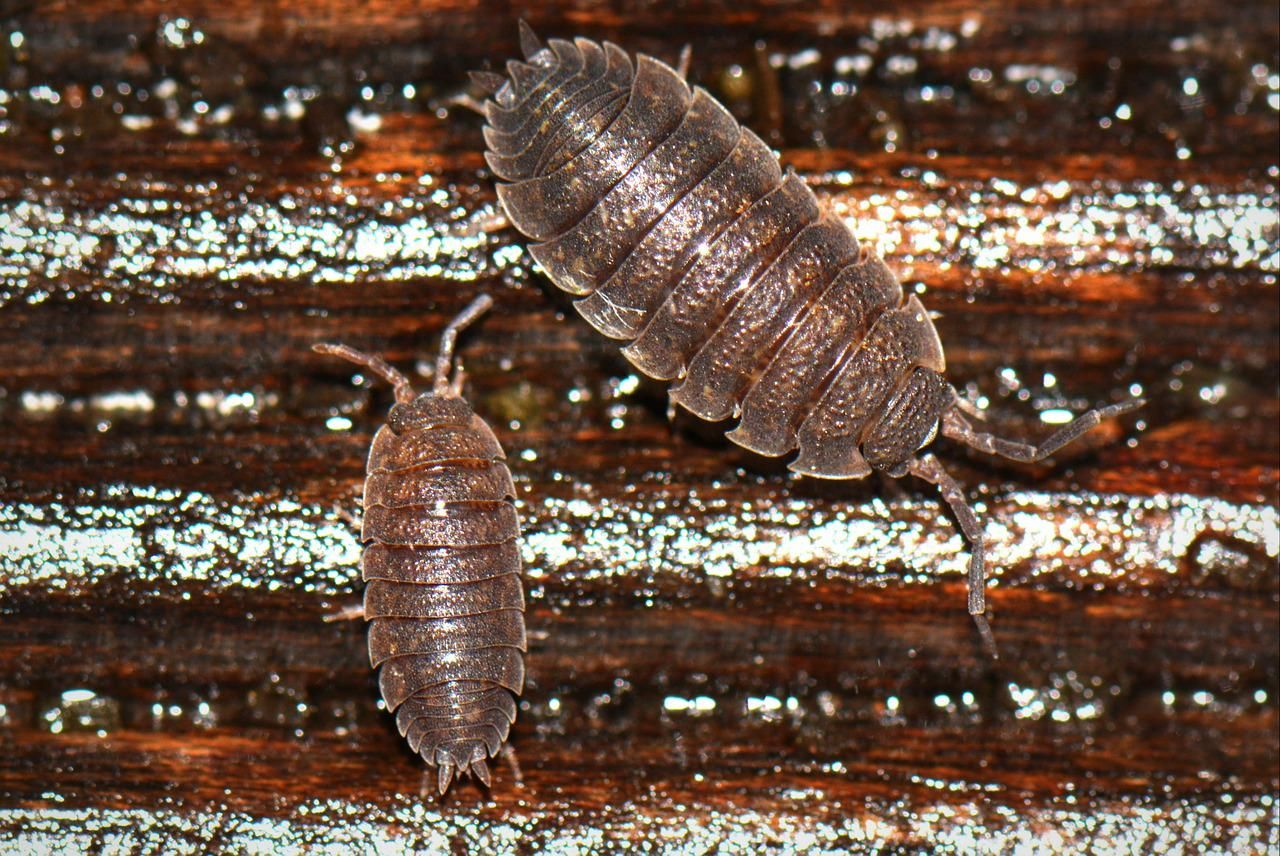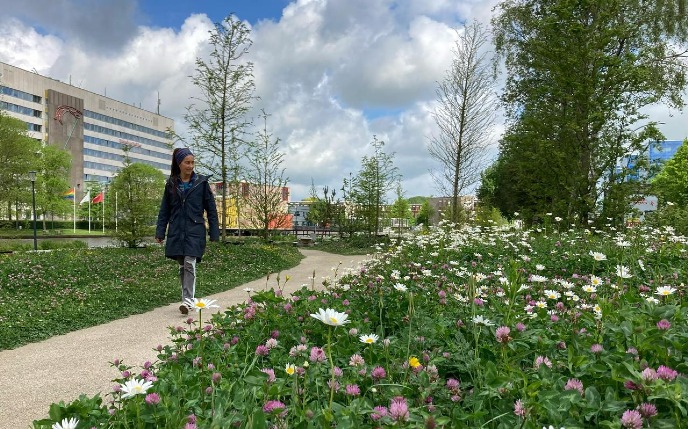Biodiversity Day

The 'International Biodiversity Day' was created to give the subject of biological diversity extra attention every year. Biodiversity is very important but is in danger almost everywhere. You often don't appreciate what you don't see. To enable students and staff to learn more about biodiversity and because this is an important theme for the University of Groningen, the Green Office is has organized a Biodiversity Week in 2022. Last year, a new audiotour about biodiversity on the Zernike Campus was opened on Biodiversity Day. This year, the UG participates in a BioBlitz challenge under the name #HogerOnderwijsBloeit (higher education blooms).
What is Biodiversity?
Life on Earth has many variations. Whether it concerns the smallest bacteria, fungi and plants or the largest animals, the tropical rainforests or the Dutch meadows, every life form, every ecosystem and every genetic variation is unique and irreplaceable. We call this great diversity 'biodiversity'. Unfortunately, biodiversity and associated ecological values are under pressure because of human interference. In addition, the generation that is growing up now can only form a limited idea of what nature looked like 30 years ago, for example, which makes it increasingly difficult to make the loss of biodiversity tangible.
Biodiversity at the UG
The University of Groningen has the ambition to focus more on ecology and biodiversity. The ambition is to increase the biodiversity of UG sites by adopting a different management method, based on a target species policy. In practice you can think of waterways with (partly) natural banks and more flowery grassland with herbs for butterflies, bees, dragonflies and other insects. So-called fringes and mantles can be developed along forest edges as a foraging area for insects, amphibians, reptiles, birds, small mammals and bats.

Biodiversity at the Zernike Campus
You might be surprised that many opportunities relating to ecology and biodiversity can be found on Zernike grounds. If you would like to know more about this you can take the audio tour at the Zernike Campus.
The tour starts at the decking next to the Duisenberg pond and works by scanning the QR-codes on the panels. Don't forget your earphones!

Research on Biodiversity
Biodiversity is not only being explored in relation to UG building sites. Various UG researchers are also conducting research on this topic, including investigating the consequences of human activity on biodiversity, how new species emerge, and the mutual differences between animals or insects. Below, you can read more about a few of the studies conducted by these researchers.
Martine Maan | Animal behaviour, evolution, and biodiversity
Martine Maan is a researcher whose specialisms include animal behaviour, evolution, and biodiversity. From spiders to fish, she researches a wide range of animals and insects. Together with her colleagues, she is attempting to understand how new animal and insect species emerge in ecologically different environments. For instance, she recently investigated the differences between spiders in the city and countryside, for which she used citizen science (science with the help of citizens). In a measurement activity organized through CurioUs?, she asked interested citizens to record aspects such as the size and colour of spiders, as well as the size of their webs and the mesh gaps. You can read more about the spider study in this interview.
Martine Maan is a Rosalind Franklin Fellow at the Faculty of Science and Engineering

Sancia van der Meij | Biodiversity in coral reefs
Sancia van der Meij is a researcher and part of GELIFES, the Groningen Institute for Evolutionary Life Sciences. She conducts a lot of research into life on coral reefs, where biodiversity is under pressure due to climate change, overfishing, and tourism, among other factors. She recently published the book At the Heart of the Coral Triangle together with photographer Alan J. Powderham. In this book, she describes the unique animal species that can be found on coral reefs, supported by stunning photographs by Powderham that highlight the blaze of colour of the coral and its life.
Want to read more about Van der Meij’s work? Check out this interview!
Sancia van der Meij is assistant professor at the Faculty of Science and Engineering

Timo van Eldijk | Experimental evolution, microbiology, and palaeontology
Timo van Eldijk is a PhD student who is focusing, among other topics, on experimental evolution, microbiology, and palaeontology. He studies, for instance, fossils of insects found across the entire world, including in the Netherlands. During a paleontological study at Winterswijk, for example, he found the oldest fossilized beetle and wood louse ever found in the Netherlands. He gained particular attention for the wood louse, which is at least 245 million (!) years old and therefore older than the oldest dinosaur ever found. Van Eldijk named the fossil after its source in Gelderland’s Winterswijk: Gelrincola Winterswijkensis. Want to know more about this centuries-old fossil? Read this NOS article on the topic.
Timo van Eldijk is PhD student at the Faculty of Science and Engineering


Who's working on biodiversity at the UG?
My name is Cathy Hermans. I am working for Terrain Management at the University of Groningen. In this department we are, among other things, working on the transition from traditional to sustainable and ecological terrain management within the University of Groningen. We do this by increasingly using machines on batteries instead of fossil fuels; by using sheep for maintenance of extensive grass management, pigs for combating invasive exotic plant species and by managing in a more phased manner (not mowing or sawing everything at once, but a part each time). I come from forest and nature management, have been retrained as a landscape gardener and have been a green, gray (pavement, etc.) and blue (water) developer for years.

